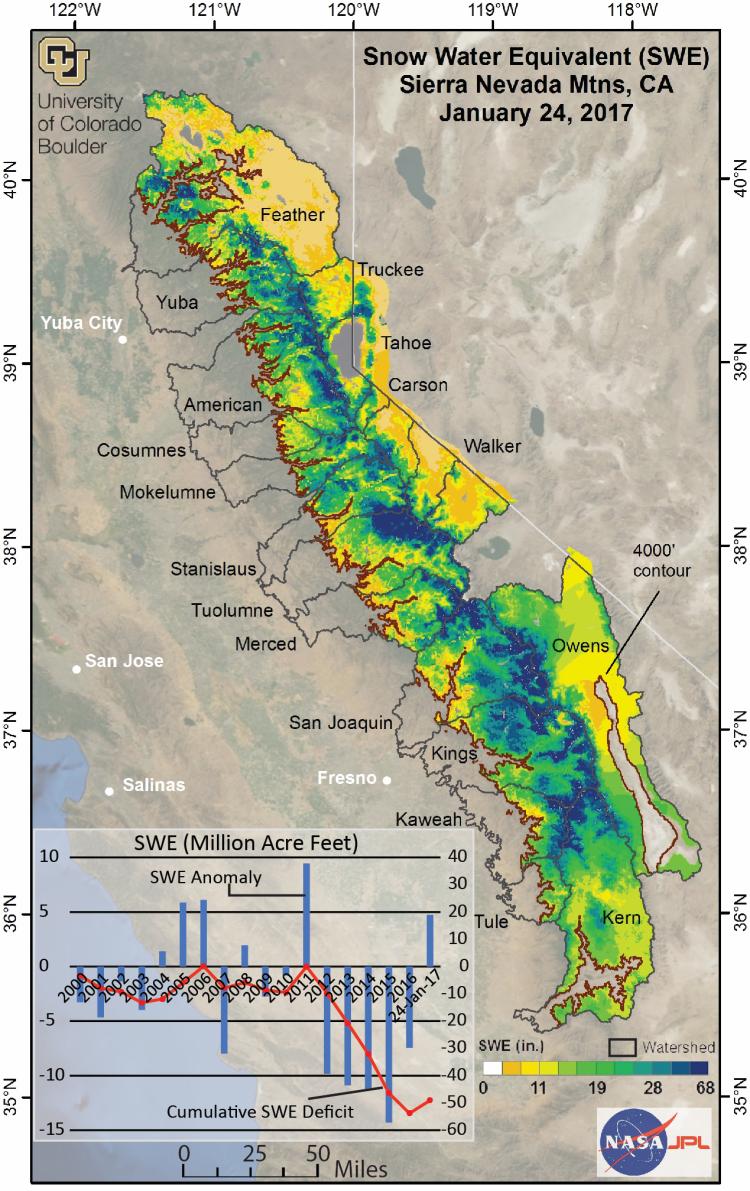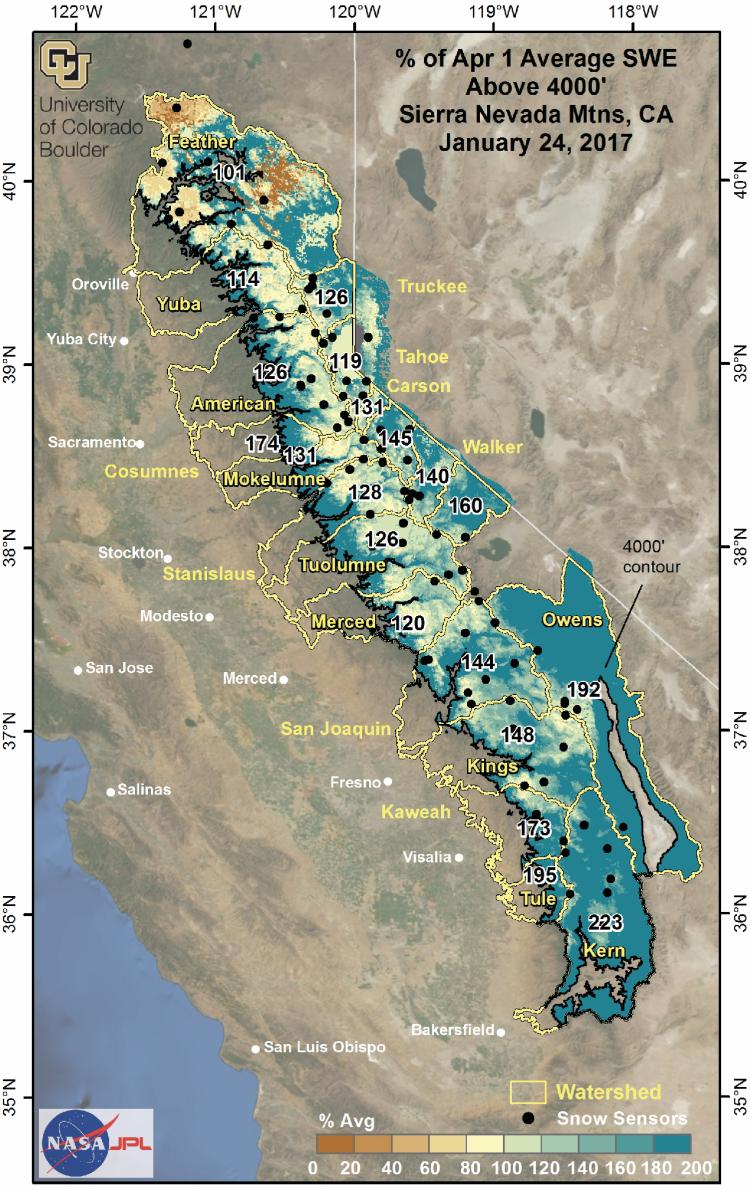Recent storms recouped 37 percent of California’s five-year snow-water deficit
The recent “atmospheric river” weather pattern that pummeled California with storms from late December to late-January may have recouped 37 percent of the state’s five-year snow-water deficit, according to new University of Colorado Boulder-led research.

A map showing snow-water equivalent totals in California's Sierra Nevada range as of Jan. 24, 2017. Credit: Leanne Lestak / University of Colorado Boulder.
Using NASA satellite data, computer models, and ground-based snow sensors, researchers at CU Boulder’s Center for Water Earth Science and Technology (CWEST) estimate that the recent storms deposited roughly 17.5 million acre feet of water during the month of January. Compared to averages from the pre-drought satellite record, that amount represents over 120 percent of the typical annual snow accumulation for the Sierra Nevada range.
Snow-water deficit represents the cumulative annual deficit below the average annual snowpack water storage. On average, California has experienced a snow-water deficit of approximately 10.8 million acre feet per year from 2012 to 2016. The total five-year snow-water deficit over that period is roughly 54 million acre feet, but two powerful recent storms appear to have recouped roughly 37 percent of that total in less than one month.align="right"
Atmospheric rivers — including the so-called “Pineapple Express” phenomenon known to affect the U.S. west coast — funnel large amounts moisture out of the tropics and bring heavy rain and snow over short periods of time. In January, some areas of northern California received 20 feet of snow in a just over two weeks with some ski resorts and higher elevations more than 30 feet.
While the heavy precipitation is good news for the state, the researchers caution that there is still a long way to go before California will make up its snow-water deficit.
“When the snow stopped falling five years ago, the state had to tap into its groundwater reserves to keep up,” said Noah Molotch, director of CWEST and a research associate at CU Boulder’s Institute of Arctic and Alpine Research (INSTAAR). “One snowy winter won’t be able to entirely reverse that, but there is, at least, some cautious optimism.”
Molotch indicated that the recent storms brought much needed snow but have also brought some flood risk.

A map showing snow-water totals in California's Sierra Nevada Range, expressed as a percentage of historical April 1 averages. Credit: Leanne Lestak / University of Colorado Boulder.
“The concern moving forward relates to what happens with the weather for the rest of the winter,” said Molotch. “Reservoirs across the Sierra foothills are now relatively full and if we get another intense atmospheric river with warmer air temperatures, the risk for rain-induced flooding is considerable.”
“Early in the storm cycle, lower mountain elevations received some rain but the vast majority of the mountain precipitation has come as snow – which is exactly the way we need this precipitation,” said Thomas Painter, lead snow scientist at NASA’s Jet Propulsion Laboratory and principal investigator of NASA’s Airborne Snow Observatory. “As snow, it releases to reservoirs and ecosystems more gradually and efficiently, without the catastrophic flooding.”
“The start to winter has been the best California has seen since 2011 and gives water managers hope for relief from what has been a historically dry five-year period,” said David Rizzardo, Chief of Snow Surveys and Water Supply Forecasting for the California Department of Water Resources. “The valuable data gathered by the CWEST and NASA Earth Science teams gives the California Department of Water Resources a broader sense for how much water is being stored in our snowpack, allowing us to fine-tune vital seasonal runoff estimates which are used by water managers and reservoir operators across the state.”
The California Department of Water Resources will release the results of its most recent snow survey on Feb. 2. Final data will be available at that time.


